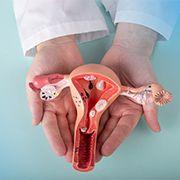Iron-Rich Foods for Pregnant Women
In This Article
Iron-Rich Foods for Pregnant Women
Nimisha
Updated on August 17, 2024
Medically verified by Dr. Arya
Fact checked by Sreemoyee

Wellness
10 minutes
It also facilitates the formation of haemoglobin, the proteins that are housed in red blood cells, which has the terminal responsibility of moving oxygen to other sections of the body’s cell.
Are you pregnant, and wondering how to keep up the iron content in your diet? Curious to know which foods are rich in iron content and how you will include them in your diet? Worry not as we are here to assist you.
In this blog, Karepedia will help you get an idea about the foods that are rich in iron which are good for pregnant women.
Importance of Iron During Pregnancy
During pregnancy requirements of Iron are around 27 mg/day which is regarded as almost double that of other women. The increased iron is necessary for several reasons: BOX
- Increased Blood Volume: Cohort changes in blood volume of pregnant women are also conspicuous, particularly the fact that it increases by about 50%, thus demanding more iron in the production of haemoglobin.
- Foetal Development: It’s well known that iron plays certain roles of significance in the foetal and placenta’s development.
- Prevention of Anaemia: By ensuring that there is sufficient amounts of iron, one is able to avoid the situation where he or she develops a condition known as iron-deficiency anaemia and which comes with effects such as fatigue, weak muscles, and frequent infections.
- Reduced Risk of Preterm Delivery: Consumption of sufficient amounts of iron will help reduce the rates of preterm delivery and babies born with low birth weight.
 10mint
10mintSexual Health Matters: How To Maintain Your Sexual Health ?
 10mint
10mintYour Guide to Sexual Health Screening and Preventive Measures
 10 mints
10 mintsSTDs in Women: Comprehensive Guide on Symptoms and Treatments
Get a Callback Now
Types of Iron in Foods
Iron comes in two forms in foods: Heme iron and non-heme iron.
Let’s learn a little more about them:
- Heme Iron: In meats, poultry, and fish of which the products are consumed directly and mostly prepared for human consumption. It is absorbed better within the human body than the other one.
- Non-Heme Iron: Present in plant-based foods such as vegetables, grains, legumes and offs Burma. It is not as quickly assimilated as fats and carbohydrates but is a necessary component Nonetheless for any diet.
## Iron-Rich Foods for Pregnant Women
Animal-Based Sources
1. Lean Red Meat
- Heme iron is well provided in beef and lamb. They also contain protein and nutrients which are zinc and B group vitamins.
- Example: Beef liver is especially iron-dense, 3 ounces offers about 5 milligrams of the iron.
2. Poultry
- Heme iron is present plentiful in chicken and turkey and especially in the dark portion of the chicken.
- Example: Dark turkey meat for instance has about 2 mg of iron per 3-ounce serving.
3. Fish
- Sea foods are healthy for the mother and the unborn child because salmon and tuna have heme iron which is a good source of iron in the baby’s brain and also omega-3 fatty acids.
- Example: One can of tuna has about 1 mg of iron which is found in a 3-ounce serving.
4. Eggs
- Eggs are considered to be rich in moderate amounts of iron, particularly the non-haem iron.
- Example: Egg is also considered an excellent source of iron as one large egg contains about 1 mg of it.
Plant-Based Sources
1. Legumes
- They get the non-heme type of iron and contain protein and fiber; these include beans, lentils, and chickpeas.
- Example: A net supply of one cup of cooked lentils holds roughly 6. 6 mg of iron.
2. Tofu and Tempeh
- These soy products contain non-heme iron; and sources of protein and calcium.
- Example: As estimated, 30 gm of firm tofu which is half a cup comprised about 3 mg of iron.
3. Dark Leafy Greens
- Non-heme isoaflin rich foods of spinach, kale and Swiss chard are also good sources of calcium and folic acid.
- Example: For instance, one cooked cup of spinach gives approximately 6. 4 mg of iron.
4. Fortified Cereals
- Cereals consumed during breakfast are usually manufactured with an additive component that offers rather a large quantity of non heme iron.
- Example: In terms of iron fortified cereal bowls one can get up to eighteen milligrams.
5. Nuts and Seeds
- Some of the snacks that are great sources of non-heme iron include pumpkin seeds, sunflower seeds, and cashews besides being good sources of healthy fats.
- Example: Hence, pumpkins seeds’ nutrient density can be described as high: A single ounce contains approximately 2. 5 mg of iron.
6. Whole Grains
- Quinoa, brown rice, and oatmeal contain high amounts of non-heme iron, and fiber.
- Example: A cup of cooked quinoa yields approximately 2 grams of dietary fiber for the body. 8 mg of iron.
Enhancing Iron Absorption
Certain dietary practices can enhance the absorption of non-heme iron from plant-based sources:
1. Consume Vitamin C-Rich Foods:
Since vitamin C enhances the absorption of non-heme iron, people should take foods containing this vitamin with food sources of non-heme iron. Employ use of foods such as oranges, peppers, strawberries, and tomatoes in your diet.
Example: You can have a glass of orange juice with cereal that is fortified or squeeze lemon juice over the spinach salads.
2. Pair Iron-Rich Foods with Meat, Fish, or Poultry:
- Meat based foods contain heme iron and these help to boost the absorption of non heme iron.
- Example: You can include a chicken in a bean soup or use lentils in tandem with rice on the side that is beef.
3. Avoid Inhibitors of Iron Absorption:
There are also foods that can interfere with the absorption of iron, these includes:
- Calcium: Calcium competes with iron therefore it means high levels of calcium in the body will hamper with iron nutrient. Do not take high-calcium foods or supplements with iron containing foods or supplements.
- Polyphenols: Phytates are found in tea, coffee, some grains, and legumes and they decrease the absorption of iron. It is better to refrain from these drinks during the times when you are planning to eat something.
- Phytates: These are phytic acid and include them in whole grain and legumes which prevents iron absorption. Phytates can be decreased in foods by soaking, fermenting or sprouting the food stuff in question.
Sample Meal Plan for a Day
Here’s a sample meal plan to help pregnant women meet their daily iron needs:
Breakfast
- Scrambled Eggs with Spinach: Whisk two eggs and one cup of spinach which has been prepared properly.
- Whole-Grain Toast: with a side dish of toast whole grain bread.
- Orange Juice: A helping of oranges to aid in the assimilation of iron up and in take of protein and vitamin C.
Mid-Morning Snack
- Fortified Cereal: This includes a bowl of cereal produced from iron floured and taken with milk in the morning.
- Strawberries: On the side there is a crispy lettuce wedge and a bowl of fresh strawberry.
Lunch
- Lentil Soup: Preparing lentil soup, carrots are combined with tomatoes and Kale at a particular time while preparing the soup.
- Whole-Grain Bread: Whole grain bread and other similar foods, it may only be one slice.
- Salad: That accompanied with a culinary salad side dish of the assortment of vegetables inclusive of bell peppers and meant to be enriched with lemon vinaigrette.
Afternoon Snack
- Pumpkin Seeds: Few pumpkin seeds which can hardly fill a cup, if not a tablespoon full.
- Apple Slices: Apples cut into slices and peanut butter represent a healthier option, every slice of apple has a little peanut butter on it.
Dinner
- Grilled Salmon: Pretty image of a plate on which there is grilled salmon with a few drops of lime juice.
- Quinoa: A cooked quinoa cliche that gives an impression of spiralled steam on the side of the quinoa.
- Steamed Broccoli: The following is also an appropriate answer as a healthy type of food: a serving of broccoli that has been steamed.
Evening Snack
- Yogurt with Berries: The dessert is the easiest, take a bowl of yogurt and add fresh berries on it.
- Almonds: The estimated daily serving size can be easily measured by one to two tablespoons of almonds; some brands of energy bars include the power bar.
Iron Supplements
But sometimes, even dieting can help to fulfil the requirement of irons during pregnancy, though it may not be sufficient to cope with the extra demand. It might be necessary to take an iron supplement, says your healthcare provider.
Here are a few things to keep in mind:
- Consult Your Doctor: It is always wise to consult a doctor before taking any supplement to know the appropriate dosage and type to take.
- Side Effects: The side effects of some forms of iron include constipation or nausea for some people. They can be minimized by administering them along with food or at night.
- Consistency: This is the reason you need to keep taking your supplement every day as recommended to ensure your body has enough iron.
Iron is an important nutrient for pregnant women being required for the health of both the mother and the foetus.
According to doctors, they need higher amounts of iron during pregnancy which can be fulfilled by consumption of iron containing foods of animals as well as plant origin.
Thus, knowing advice regarding balanced diets, proper approaches to iron absorption during pregnancy and supplement use when needed will be beneficial for pregnant women to obtain the proper amount of the nutrient.
Pregnant women are advised to seek professional advice on diet and in regards to iron supplementation from their gynaecologists.
Iron is Important for moms and babies as it helps make healthy blood and carries oxygen in the body.
Moms need more iron because they have more blood and their baby needs it too.
Iron helps the baby grow, it prevents moms from feeling tired and sick, and helps avoid early baby births.
Eat vitamin C foods (like oranges) with iron foods.
Eat meat, fish, or chicken with plant iron foods.
Sometimes food isn’t enough, so doctors might give iron pills.
Source Links
Healthline
Forbes
National Institutes of Health (NIH)

